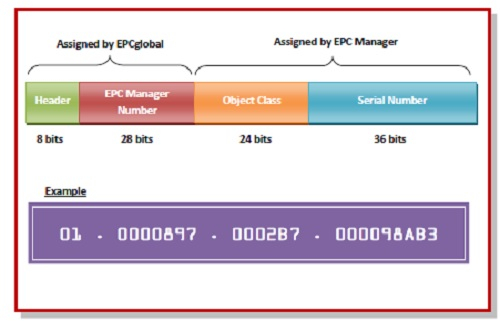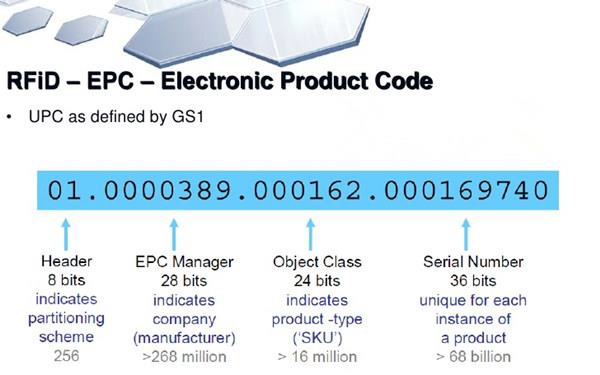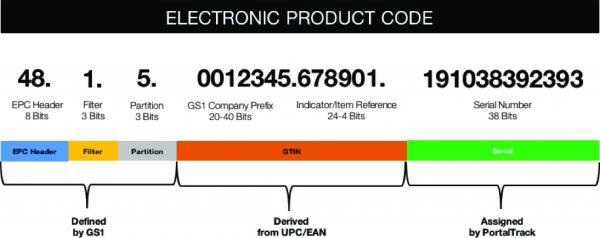
 Data Structure
Data Structure Networking
Networking RDBMS
RDBMS Operating System
Operating System Java
Java MS Excel
MS Excel iOS
iOS HTML
HTML CSS
CSS Android
Android Python
Python C Programming
C Programming C++
C++ C#
C# MongoDB
MongoDB MySQL
MySQL Javascript
Javascript PHP
PHP
- Selected Reading
- UPSC IAS Exams Notes
- Developer's Best Practices
- Questions and Answers
- Effective Resume Writing
- HR Interview Questions
- Computer Glossary
- Who is Who
Electronic Product Code (EPC)
Electronic Product Code (EPC) is a universal identifier that aims to render a unique identity to every possible physical object of the world. EPCs are mostly encoded on RFID (Radio Frequency Identification) tags that are used to check identities of objects like inventory, assets and people, and track them.
EPC is the 96–bit number associated with an RFID tag for identifying a particular tag amongst other tags. It distinguishes two identical products, and also provide the product’s manufacture date, origin or batch number.
The EPC structure is laid down by EPCglobal Tag Data Standard, an open standard freely defined by EPCglobal Inc.
EPC GS1 Keys
Objects having RFID tags are grouped into classes and each class of object is associated with a corresponding GS1 Key. The function of GS1 key is to assign keys, manage keys, define their data structures and provide context for the EPC data.
The different EPC GS1 keys and area of uses are −
- GDTI − Document
- GSRN − Service Relation
- GTIN − Trade Item
- GRAI − Returnable / Reusable Asset
- GLN − Location
- SSCC − Logistical Unit
- GIAI − Fixed Asset
Format of EPC
The basic format of a EPC code is shown in the following diagram −

The purpose of each field is −
- Header − A 8 bit number that shows the length, type, structure, version, and partitioning scheme.
- EPC Manager Number − A 28-bit number that indicates company manufacturer.
- Object Class − A 24 – bit number that identifies product types.
- Serial Number − A 36 – bit unique number that identifies each product instance.



